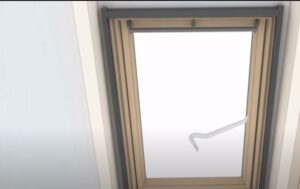Increasing natural light in a home is an important consideration for many homeowners, and roof windows are an excellent way to achieve this. A roof window, also known as a skylight, brings natural light into a home and can add both visual appeal and functionality. In this article, we will explore whether it is possible to install a roof window in an Australian home, and what you should consider before doing so.
Why Is Natural Light Important?
Natural light has numerous benefits, both aesthetically and functionally. It can make a room feel larger and more open, reduce the need for artificial lighting, and potentially lower energy costs. Additionally, studies have suggested that natural light can improve mood and productivity levels.
There’s also a less tangible benefit to natural light: many homeowners simply prefer the look of a well-lit room with bright, sunny windows.
Can You Install a Roof Window in Australia?
The answer is yes, but it’s not as simple as just popping open your roof and installing a window. Depending on the size of your property and the type of roof you have, there may be certain local regulations and building codes that need to be followed in order for your window to be approved. Additionally, the installation process itself requires specialised tools and knowledge of construction techniques – so it’s likely best to leave this job to the roofing professionals.
Building Regulations
 Before installing a roof window in your Australian home, it is important to check if it complies with building regulations. These regulations are designed to ensure the safety of the occupants of a home and the durability of the structure. The regulations vary by state and territory, so be sure to check with your local council or building authority to determine what is required in your area.
Before installing a roof window in your Australian home, it is important to check if it complies with building regulations. These regulations are designed to ensure the safety of the occupants of a home and the durability of the structure. The regulations vary by state and territory, so be sure to check with your local council or building authority to determine what is required in your area.
Regulations range from the type of window and opening mechanism, to the size and placement of the window in relation to other features on the roof. It is important to ensure that all regulations are met before installation begins.
In general, roof windows must meet certain requirements. They must have a minimum size and be installed at a specific height above the floor. The installation must also comply with fire safety regulations, such as having a fire-resistant frame and glazing.
Structural Considerations
Installing a roof window requires cutting a hole in the roof and creating a structural opening. It is important to ensure that the roof structure can support the weight of the window and any additional loads, such as snow or wind. You may need to reinforce the roof structure or add additional supports to accommodate the window.
You should also consider the orientation of the roof window. North-facing windows provide the most daylight throughout the day, while east-facing windows provide morning sunlight and west-facing windows provide afternoon sunlight. South-facing windows receive less direct sunlight but can still provide natural light and ventilation.
Energy Efficiency
When installing a roof window, it is important to consider its energy efficiency. Heat gain and loss through the window can affect the comfort of the home and increase energy bills. Look for windows with low-emissivity coatings, which reflect heat back into the room, and double or triple glazing, which provides better insulation.
You should also consider how the window will be ventilated. Roof windows can be opened manually or with electric motors. Electric motors can be programmed to open and close automatically, depending on temperature and humidity levels, providing natural ventilation and reducing the need for air conditioning.
Installation
Installing a roof window is a complex task that requires careful planning and execution. It is important to hire a professional roofing contractor with experience installing roof windows. They will have the necessary skills and equipment to cut the opening, install the window, and ensure that it is weather-tight and structurally sound.
Before installation, the contractor will assess the roof structure and determine if any reinforcements are needed. They will also measure the opening and order the appropriate size and type of window. The installation process typically takes one to two days, depending on the size and complexity of the window.
Conclusion
Installing a roof window is an excellent way to increase natural light in an Australian home. However, it is important to consider building regulations, structural requirements, energy efficiency, and installation before doing so. By working with a professional roofing contractor and carefully considering these factors, you can add a beautiful and functional skylight to your home that enhances its beauty and value.



